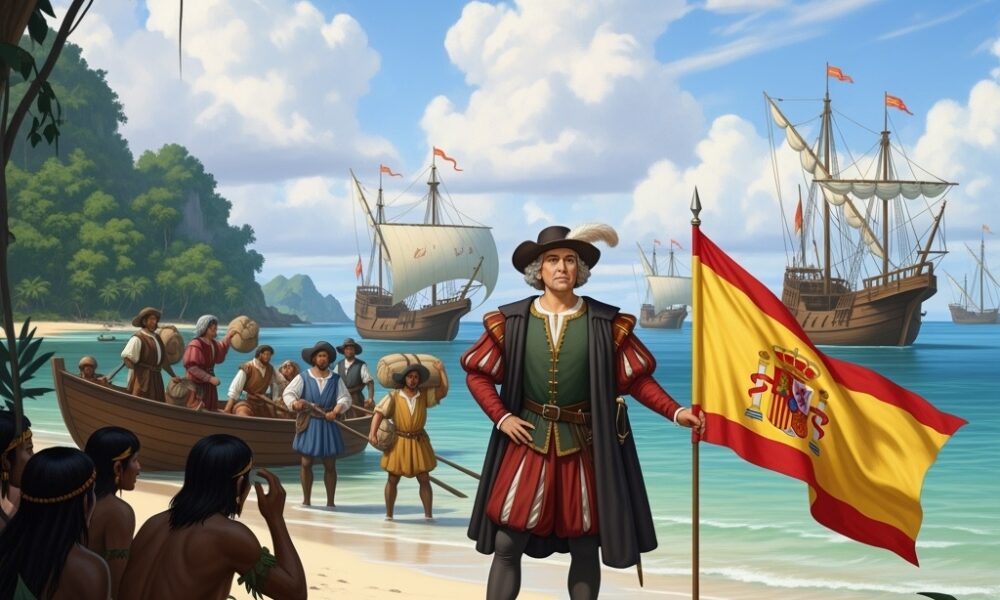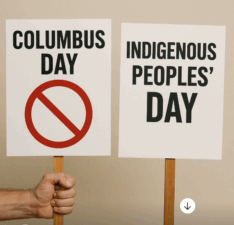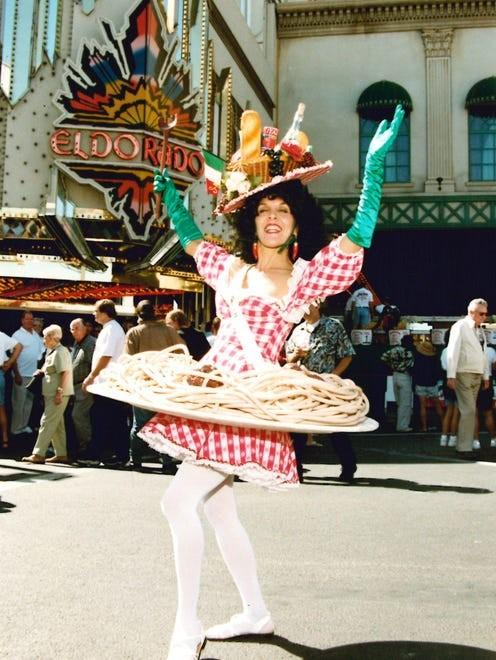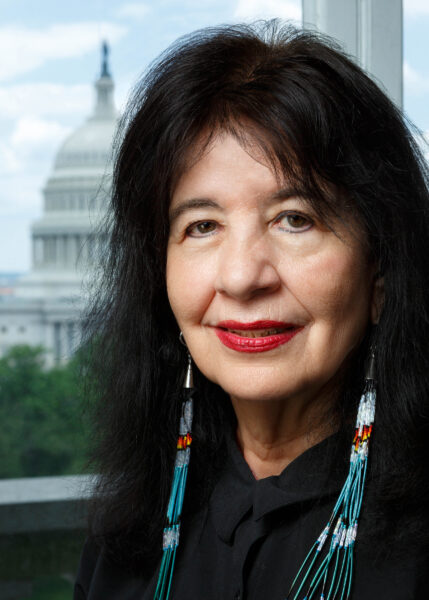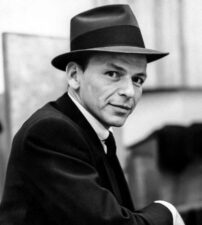(Author’s Note: I know this is long – a 14-minute read – but hopefully you’ll make it to the end.)
At the beginning of the month, there were several stories that contained some questionable facts surrounding the Columbus Day holiday. And all of them created mixed emotions for many.
Social media was abuzz as reports first surfaced at the beginning of the month that President Trump had declared he was making “Columbus Day” a national holiday again. And that he was getting rid of the newer “Indigenous Peoples’ Day.”
Columbus background
Let’s get some facts on the record first. The current president didn’t restore Columbus Day, since it never went away. It was first declared a federal holiday in 1934 when Franklin D. Roosevelt set October 12 as the official date each year.
The 12th wasn’t Christopher’s birthday, but rather the day that one of his crew aboard the Pinta yelled, “Tierra!” (land). The fleet had reached an island after 33 days at sea. The popular notion is that it was San Salvador, then known as Watling Island in the Bahamas. Watling officially became San Salvador Island in 1925 to honor this likely landing site. A few scholars have suggested it may have instead been a nearby island like Samana Cay, Plana Cays, or Rum Cay. But it is safe to say that it was somewhere in the Bahamas.
Spoiler alert: Despite what many of us thought we learned in grammar school, Columbus never set foot on (or “discovered”) any land that later became the United States. He only got as far north as Cuba on any of his four voyages. If there was an honor for “discovering” the U.S. by Europeans, it should go to Spanish explorer Juan Ponce de León in 1513. That’s more than 20 years after Columbus “sailed the ocean blue in 1492.” In case you didn’t know, the place Columbus “discovered” had already been home for centuries to the native Taíno people.
So, despite the misleading reports, the official federal holiday has been in place for almost a century (just nine years short). However, the day of observance did shift in 1971 as part of the Uniform Monday Holiday Act. That set the new date as the second Monday in October, which meant the holiday could occur anytime from October 8th to the 14th.
Correctly, what the President did do earlier this month was to simply proclaim that October 13, 2025 was Columbus Day and called on the government to observe the holiday “with appropriate ceremonies.”
The actual history of the event goes back even further than the 1930s. The Knights of Columbus, a Catholic fraternal organization founded in 1882, strongly promoted the holiday to celebrate Catholic and Italian contributions to U.S. history.
In 1905, Colorado became the first state to make Columbus Day an official holiday at the urging of Angelo Noce, an Italian immigrant and civic activist. Thirteen years earlier, on the 400th anniversary (1892), there were massive parades, school ceremonies, and church services on October 12. That day, President Benjamin Harrison issued a one-time national proclamation for that anniversary, urging Americans to mark the milestone.
Indigenous Peoples’ Day
Reportedly, the second part of Trump’s announcement was that he would no longer recognize Indigenous Peoples’ Day. That is also inaccurate. His recent declaration only called for celebrating the traditional holiday. He also praised Columbus as “the original American hero, a giant of Western civilization, and one of the most gallant and visionary men to ever walk the face of the earth.” Not everyone agrees with those compliments.
However, back in April 2025, President Trump did say he would not follow his predecessor’s practice of recognizing Indigenous Peoples’ Day alongside Columbus Day. And he didn’t.
For many of us, this new term and holiday popped up when President Joe Biden issued the first proclamation in October of 2021 officially recognizing a dual Columbus Day and Indigenous Peoples’ Day celebration on the same date.
Rather than welcoming this wonderful new tribute to the people who actually deserve the title of “discovering” America, this designation caused quite a stir and some controversy. It was especially problematic for many in the Italian American community who thought they were being slighted. That was a feeling that Native Americans had become accustomed to each October.
I have always loved the story of an American Indian sailing to Italy a few years ago, wading ashore and planting his tribal flag on the Italian coast to claim the country for his tribal nation.
Like many good stories, that, too, is far from accurate. But it does have some basis in fact. Chippewa activist Adam Fortunate Eagle (Adam Nordwall) flew into Rome in September 1973 in full regalia and declared on the airport tarmac that he had discovered Italy. Over time, the “wading ashore” and the “flag planting” accounts were falsely added to the tale. Nonetheless, it was great satire and drew attention to the European ironies about their “discoveries.”
There is also the problem (at least for me) on the “politically correct” name of indigenous people. You might have guessed that it would have originated in California. In 1992, during the 500th anniversary of Columbus’s voyage, Berkeley adopted Indigenous Peoples’ Day, citing a need to “recognize Indigenous peoples and their contributions.” In fact, the indigenous title goes back even further to the United Nations where in 1982 they first began using the phrase “recognition of the rights of Indigenous peoples.”
The word “Indigenous” comes from the Latin “indigena,” meaning “sprung from the land” or “native to a place.”
In most of my writings I, and many others, have settled on the term “Native Americans.” But even that doesn’t work well when in many locales or outside our borders where they prefer ‘First Nations,’ ‘Inuit ,’ ‘First Peoples,’ ‘Aboriginals,’ or other native terms.
While working with Native American gaming operators, all my tribal friends always referred to themselves as Indians. That is a perfectly acceptable term for most, but it never felt right to me since my youth was heavily warped by Saturday afternoon matinees watching the factually deficient “Cowboy and Indian” movies.
Even within tribes, there can be confusion. My last full time day job was working for the Pechanga Casino & Resort. Their tribe is officially and proudly known as the Pechanga Band of Luiseño Indians. However, both those terms are actually Spanish, just like the names of almost all California tribes.
Pechanga means “the place where water drips” and “Luiseño” refers to the nearby Spanish mission of San Luis Rey. But in their native language (used for the 10,000 years before the Spanish invaded) their tribal name was “Payómkawichum.” Most non-locals can’t even pronounce Pechanga (pe-CHONG-ah) correctly, so they’d never master that one.
Why not compromise?
At the Eldorado Resort Casino in Reno (now the owners of Caesars), they have been celebrating their own Italian American heritage with a Columbus Day event since 1980. It is called the “Great Italian Festival” and was started by the late Gaming Hall of Famer, Don Carano. Their festival features grape stomps, wine tastings, cooking demonstrations, dancing, live entertainment and more. It is all in recognition of Italian American culture and their traditions here in the U.S. To me, this is a far better way to salute that history than honoring Christopher Columbus.
Of course, the explorer deserves due credit for organizing and securing the finances for the expeditions and for his courage in facing the then-unknown challenges of crossing the Atlantic. PBS television aired a great series on his adventures in 1991, and the richly illustrated companion book called “Columbus and the Age of Discovery” is worth reading. It is a beautiful book, and real bargain now on Amazon (less than $10).
But when you look at the man’s full story, you may be less inclined to see him continue to get a national holiday. It’s not “cancel culture;” it’s just facts:
- Historical records from his own contemporaries, such as Bartolomé de las Casas (a Spanish priest), describe horrific acts: beatings, mutilations, sexual violence, and executions.
- He sent enslaved Indigenous people to Spain to be sold. His letters show he saw enslaving people as part of the economic value of his “discoveries.” He wrote: “Let us in the name of the Holy Trinity go on sending all the slaves that can be sold.”
- He and his men also enslaved natives locally, forcing them to mine for gold, build settlements, and serve as laborers. When gold was scarce, he imposed brutal tribute systems, forcing his slaves to deliver quotas of gold or face mutilation or death.
- Within a few decades of his arrival, the Taíno population plummeted from an estimated count of well over 250,000 to near extinction, due to murder, enslavement, and disease. While Columbus didn’t intentionally spread disease, his voyages triggered epidemics of smallpox, measles, and influenza.
A better future
American Indians gave us the principles of honoring and preserving our land, water, and the environment. They cultivated corn and made the first few Thanksgivings possible. They also blessed us with heroes from athletes like Jim Thorpe and Billy Mills; pioneering guides like Sacagawea; actors Lily Gladstone, Jay Silverheels, Adam Beach, and Jason Momoa; artists like basketeer Louisa Keyser (aka “Dat So La Lee”) and writer Joy Harjo (the first Native American Poet Laureate of the United States). And don’t forget that nine of the 10 largest and best casinos in the U.S. are run by Native Americans.
The list of notable Italian American achievements is even longer and lengthy: they gave us pizza, Gucci, gnocchi, gelato, Versace, glorious sauces, and much more. Their list of notables is ridiculously impressive. Just to scratch the surface consider Frank Sinatra, Dean Martin, Tony Bennett, nuclear scientist Enrico Fermi, Lady Gaga, Vince Lombardi, Rocky Marciano, Robert DeNiro, Leonardo DiCaprio, novelist Mario Puzo, director Martin Scorsese, Bruce Springsteen and so many more.
In what I consider a misguided attempt to honor Italian Americans, Rep. Mike Rulli, an Ohio Republican, introduced legislation around this time last year that would prohibit federal funds from flowing to states and local governments that have replaced Columbus Day with Indigenous Peoples’ Day. He added, “This is not about inclusion, it is about erasing the contributions of millions of Italian Americans who helped build this nation.” Of course, in our divided Congress the bill went nowhere. Yet, I agree with his intent but completely disagree with his solution.
So, let it be known that Buddy Frank hereby declares Monday, October 12, 2026 and every second Monday of October in the future, as “Native American & Italian American Appreciation Day.” We need to celebrate both groups of these great Americans, their histories and their cultures.
But let’s leave Christopher Columbus out of everything in this country but the history books, museums and National Geographic.
# # #
NOTE: Adding to the confusion, most believe that Christopher Columbus was from Genoa, Italy. However, a documentary released last October by Spain’s national broadcasting network (TVE), says he may have been from the eastern Iberian Peninsula, and that he was Jewish, not Catholic! That last statement is highly controversial, but most concede that his and his son’s DNA prove that Columbus was of Sephardic Jewish ancestry. Facts keep messing up so many good stories.
